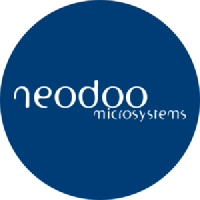Getting started
-
Launch the product via 1-Click
-
Use a web browser to access the Admin console at: https://[ec2-ip]:8443, where [ec2_ip] is the public ip provided by Amazon for your instance.
-
Log in using the following credentials:
-
Username: admin
-
Password: the instance_id of the instance
-
You can also access your instance via SSH using the username and your Amazon private key.
The username depends on the operative system:
- Centos 9 Stream: 'ec2-user'
- Other Centos: 'centos'
- Ubuntu: 'ubuntu'
- Rocky Linux: 'rocky'
Installation details
Keycloak installed with wildfly distribution.
In versions prior to 19.0.1, we install Keyckloak embedded within the wildfly application server
The configuration files are located inside the embedded WildFly, that is, in the directory $KEYCLOAK_HOME where KEYCLOAK_HOME is /usr/java/keycloak.
For more details on the installation, you can refer to the documentation at https://www.keycloak.org/docs/latest/server_installation/index.html
Keycloak installed with the Quarkus distribution.
From version 19.0.1, we install Keycloak with Quarkus as the distribution with WildFly is deprecated.
The configuration file is located in the directory $KEYCLOAK_HOME/conf/keycloak.conf where $KEYCLOAK_HOME is /usr/java/keycloak.
For more details on the installation, you can refer to the documentation at https://www.keycloak.org/docs/latest/server_installation/index.html
Configuración de TLS en Keycloak
If you want to obtain a valid certificate, you will need to request one from a certificate authority and make the necessary changes in Keycloak.
Service configuration
Server service is configured with systemd.The Keycloak service is in /etc/systemd/system/keycloak.service, which indicates whether to start Keycloak in development or production mode:
-
If you have chosen Keycloak with H2, the service will start in development mode: ExecStart=/usr/java/keycloak/bin/kc.sh start-dev
- If you have chosen Keycloak with MySQL or PostgreSQL, the service is started for production mode: ExecStart=/usr/java/keycloak/bin/kc.sh start
View status server:
[centos@ip-172-31-9-232 etc]$ sudo systemctl status keycloakStop server:
[centos@ip-172-31-9-232 etc]$ sudo systemctl stop keycloakStart server:
[centos@ip-172-31-9-232 etc]$ sudo systemctl start keycloakData persistence modes
H2 (Default)
Keycloak comes with its own embedded Java-based relational database called H2. Usually recommended for development environments, for production environments it is recommended to work with better relational databases.
We provide products with MySQL or PostgreSQL.
MySQL
Keycloak is configured with a MySQL database.
PostgreSQL
Keycloak is configured with a PostgreSQL database.
MySQL
View service status:
$ sudo systemctl status mysqlStop service:
$ sudo systemctl stop mysqlStart service:
$ sudo systemctl start mysqlAccess the MySQL console from your terminal:
$ sudo mysqlPostgreSQL
View service status:
$ sudo systemctl status postgresqlStop service:
$ sudo systemctl stop postgresqlStart service:
$ sudo systemctl start postgresqlAccess the MySQL console from your terminal:
$ sudo -u postgres psqlOther useful data
Location of sensitive information
All the information is saved in the database.
In MySQL the data folder is /var/lib/mysql
In PostgreSQL the data folder is /var/lib/pgsql/data
Encryption configuration
There is no encrypted data.
Changing system credentials
To change the Kecycloak credentials you have to go to the menu on the right, users, credentials and press the reset button.
Instructions on how the user interacts with Keycloak to decrypt necessary data
You can use the Keycloak management console to view all necessary data.
How to assess and monitor the health and proper function of the application.
1. Navigate to your Amazon EC2 console and verify that you're in the correct region.
2. Choose Instance and select your launched instance.
3. Select the server to display your metadata page and choose the Status checks tab at the bottom of the page to review if your status checks passed or failed.
